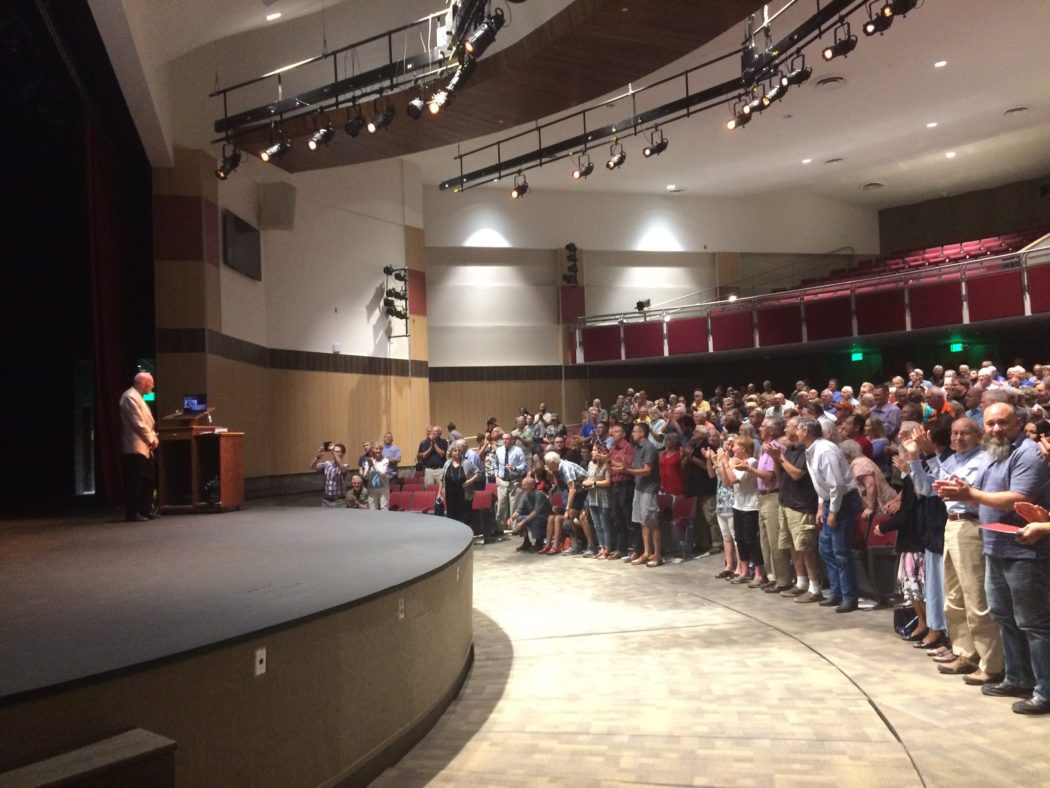Cache Valley native and Nobel prize winner returned to Logan
A long time ago, in a galaxy far, far away, two black holes collided. That collision sent waves rippling through the fabric of space and time until two machines on Earth detected them 1.3 billion years later.
On September 14, 2015, two labs – one in Livingston, Louisiana and the other in Hanford, Washington – observed gravitational waves for the first time.
Those gravitational waves confirmed a theory that was predicted by Albert Einstein 100 years ago.
This discovery was the result of nearly half a century’s work involving more than one thousand researchers from more than 20 countries around the world working on a project known as the Laser Interferometer Gravitational-Wave Observatory.
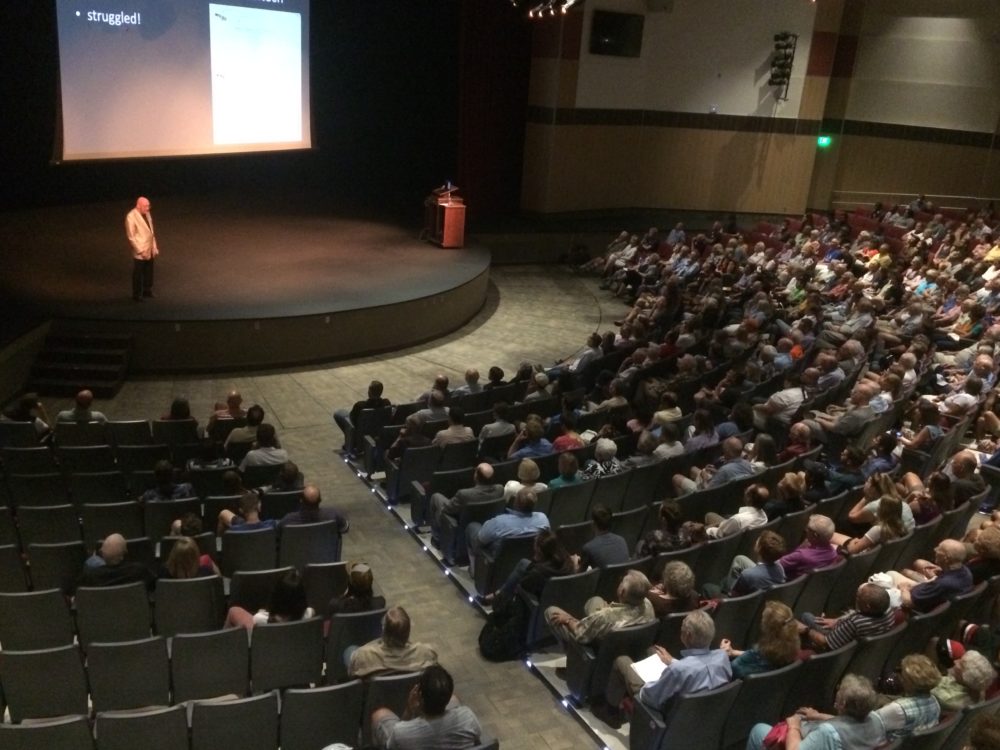
Kip Thorne, a Logan native and one of LIGO’s founding members, was one of three men to be awarded a Nobel Prize last December for the discovery. The other two recipients are Reiner Weiss, who received half of the award, and Barry Barish, who shares the other half with Thorne.
With the award, Thorne became the second person from Logan to win the Nobel Prize. The first was Lars Hansen, who was the recipient of the 2013 Nobel Prize in economics.
“I feel, in my case, the Nobel Prize is a little out of place, because it was the whole team that should have gotten it,” Thorne said.
The Logan High alumnus recently returned to Cache Valley for his 60th high school reunion. To kick off the reunion, Thorne presented a lecture titled “My Journey Through Space and Time: The Big Bang Theory, Black Holes and Gravitational Waves.”
The lecture was held in the Logan High School Auditorium July 19 and was open to the public. Mubarak Ukashat, a PhD student and teaching assistant in physics at Utah State University, went to the lecture to hear more about Thorne’s research.
“I wanted to hear about LIGO, his discovery that got him the Nobel Prize,” Ukashat said. “It’s amazing to know that gravitational waves could be detected. It’s like out of the blue. We never thought it was possible in the first place.”
Ukashat wanted to hear about how the scientists achieved the breakthrough and ask questions.
“You know, we’re writing papers, but hearing from the horse’s mouth – it makes more sense. Then you have an opportunity to ask questions that you didn’t understand from reading the papers,” he said.
Lance Chase Burton, a junior in aerospace engineering and physics, also went to the lecture to learn more about the field.
“I think that his work in the gravitational waves is fantastic,” he said. “I’ve been interested in a lot of like the intricacies of those fields. I’m not that well acquainted with them, but I would love to know more, and I figured that he would be a very good source to jump into.”
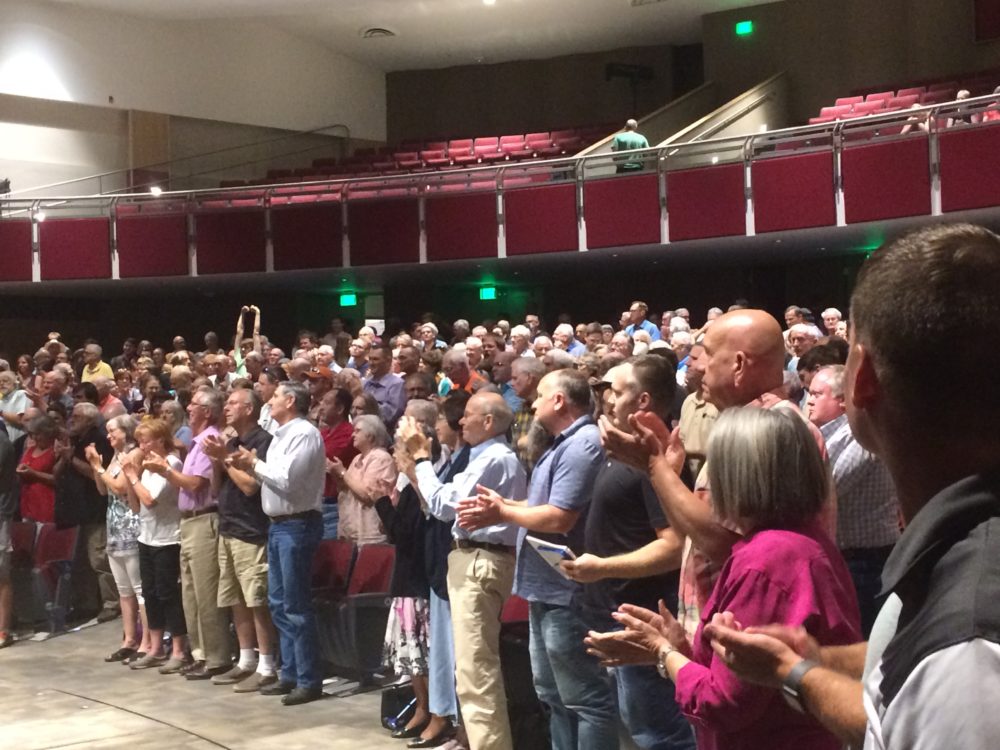
In addition to sharing his experience working with LIGO, Thorne also shared how his knowledge and research was used during the making of the movie, “Interstellar.” During the script writing process, he sat down with brothers Christopher and Jonathan Nolan to brainstorm ideas that would merge science and fiction.
Thorne said he was really pleased with how the movie turned out and that everyone involved was enthusiastic and dedicated to making a movie based on real science with real science embedded deeply in it.
“I think it’s a very important thing to do,” he said. “The film has a huge impact on people worldwide, and if you can succeed in embedding real science in a compelling way into a film, that can be a tremendous inspiration.”
To emphasize his point, Thorne said the movie was an inspiration to a lot of young people in South Korea. He was invited to the country for a special event a few months after the movie came out. The first speaker at the event was the president of South Korea, the second speaker was the secretary general of the United Nations and Throne was the third speaker.
“And it was at that level that the impact of this film had there was very different than anywhere else in the world,” he said.
The reason the movie was so popular there, he said, was because the government in South Korea places a large emphasis on science and technology.
“The technical education of the entire populous is tremendously important to them and so the government encouraged parents to take their children to this movie.”
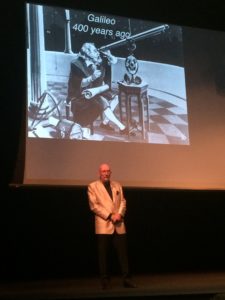
Knowing that the movie had such an impact on so many young people brought Thorne a lot of satisfaction. Not only because the movie was popular, but because, like his research on gravitational waves, he had fun and enjoyed his work.
To honor Thorne’s work, the city of Logan used the Logan High class of 1958’s reunion as an opportunity to name a street near Thorne’s childhood home after the Nobel laureate. Inspired by the Lars Hansen Drive (located on 800 East from 700 North to 1400 North) dedication in 2014, the Kip Thorne Boulevard (located 405 East and 200 North) memorializes Logan’s second Nobel Prize recipient.
When he heard the news about the dedication, Thorne said he was a little taken aback and more than a little embarrassed.
“But it’s a huge honor. It’s a huge honor,” he said. “The one thing that troubles me about it all is that I treasure my relationship with my classmates and I don’t want them treating me any differently than they always did. I’m just hoping that that’s the case.”
Thorne said he’s proud of the dedication because it pays homage to the education system of the Logan city schools. It also reflects how special a place Logan is.
“I just love coming back, just driving into the valley, while driving up through dry lake and then on down into the valley, it just, sort of warms my heart when I look out and I see this gorgeous valley,” Thorne said.
Returning to Logan brought to the surface Thorne’s memories of his childhood. He reminisced about working in the fields pitching hay and picking beans for a few summers.
“That’s where you learn what really hard work is,” said Bruce Bishop, USU professor, dean of education in business and one of the organizers of the reunion. “I don’t know where kids get that today, but you work your butt of out in these farm fields, doing these kinds of things and I think at least for me, that’s when I decided there’s got to be some life that’s a little less arduous than this and still be a lot of fun.”
Thorne and Bishop have known each other since Jr. high school and were in a lot of the same classes and did a lot of the same activities. Even though their careers took them in different directions, they’ve managed to stay in touch.
“We’ve always had that bond that you have when you’re doing things very much together,” Bishop said.
In high school, Thorne and Bishop were in a five-piece jazz band together. The band’s name was Four Roses and a Thorne.
“Well, (the band) was born out of a common interest that we had in playing music and enjoying the same kind of music,” Bishop said. “We liked the jazz and the big band swing music of the era and we thought it would be fun to play that and if we could learn enough tunes and may be somebody else would like to listen to us, although that was probably not the main motivation. Mainly, we just like to get together and play.”
Thorne said playing in the band is one of his favorite memories of Cache Valley. That, and being on the high school debate squad. In debate, Thorne was partners with Merlin Olsen, USU alumnus and National Football League Hall of Famer.
Bishop said debate was fun because during practice, they would debate against each other “and those were real dog fights.”
“You just didn’t want to get Merlin too mad, say too many mean things because he might use muscle instead of brains,” he said. “By the way, Merlin was a very, very smart guy.”
Thorne agreed. One year, Olsen took an economics class from Thorne’s mother.
“She said she was sure he never opened a book but he always got the best scores on all the exams,” he said.
Eric Markworth, the vice principal at Logan High School, said the class of 1958 is an amazing class, as shown by the work of Olsen, Thorne, and Bishop. Quinton L. Cook, an apostle for the Church of Jesus Christ of Latter-day Saints, is also a member of the same class.
“Logan High just has done a really good job at trying to put together and inspire people to whatever they want to become they can become,” Markworth said. “So, you know, obviously that was an exceptional class, but at the same time it was indicative of the citizens that were trying to inspire here at the school.”
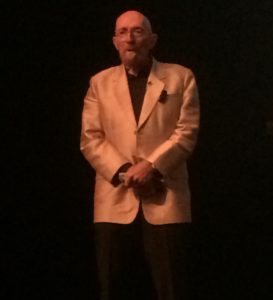
Markworth said he was inspired during Thorne’s presentation and seeing the passion he had for the work he did. Markworth said it was inspirational to see how much hard work and effort Thorne put into something he was devoted to.
Mubarak was also inspired by the work Thorne has done.
“He’s somebody USU should be proud of, Logan should be proud of. He’s somebody that should be seen as an example in the field of physics. Somebody that should be seen as a role model, that we should look up to and learn from.”
Despite the recognition he received, Thorne still feels like the Nobel Prize really belongs to the whole team, not just to him and the two other recipients.
“I’m just a regular guy,” he said. “I had some wisdom about what I chose to do with my life. And it’s not that I’m so smart and did it so well, but rather that I put a lot of care in deciding what to do, and then into choosing people to work with who themselves are very, very good.”
Having enormous talent isn’t necessary for having an impact, he added. Wisely choosing what to work on and who to work with could have a powerful impact as well.
“One thing that I really appreciated is that Dr. Thorne put in a special emphasis on the fact that it’s not just one person,” said Kevin Dimmitt, a graduate student in physics. “He got the prize, but it was the work of many scientists. I mean, today, science is all about community and I think that’s something that can’t be stressed enough.”
To USU students, Thorne’s advice is to find something to be passionate about and do it.
“Love it. If you’re going to do it, you need to love it,” Thorne said. “If you don’t love it, find something else that you do love that satisfies you in terms of what it may do for humanity. But, I think if you’re going to spend your life doing something as your principle avocation, it should be something that you really enjoy, if it’s possible to find something and make a living out of something you’re enjoying, if you can’t make a living out of it, well then do it on the side.”
@Miranda_lorenc

